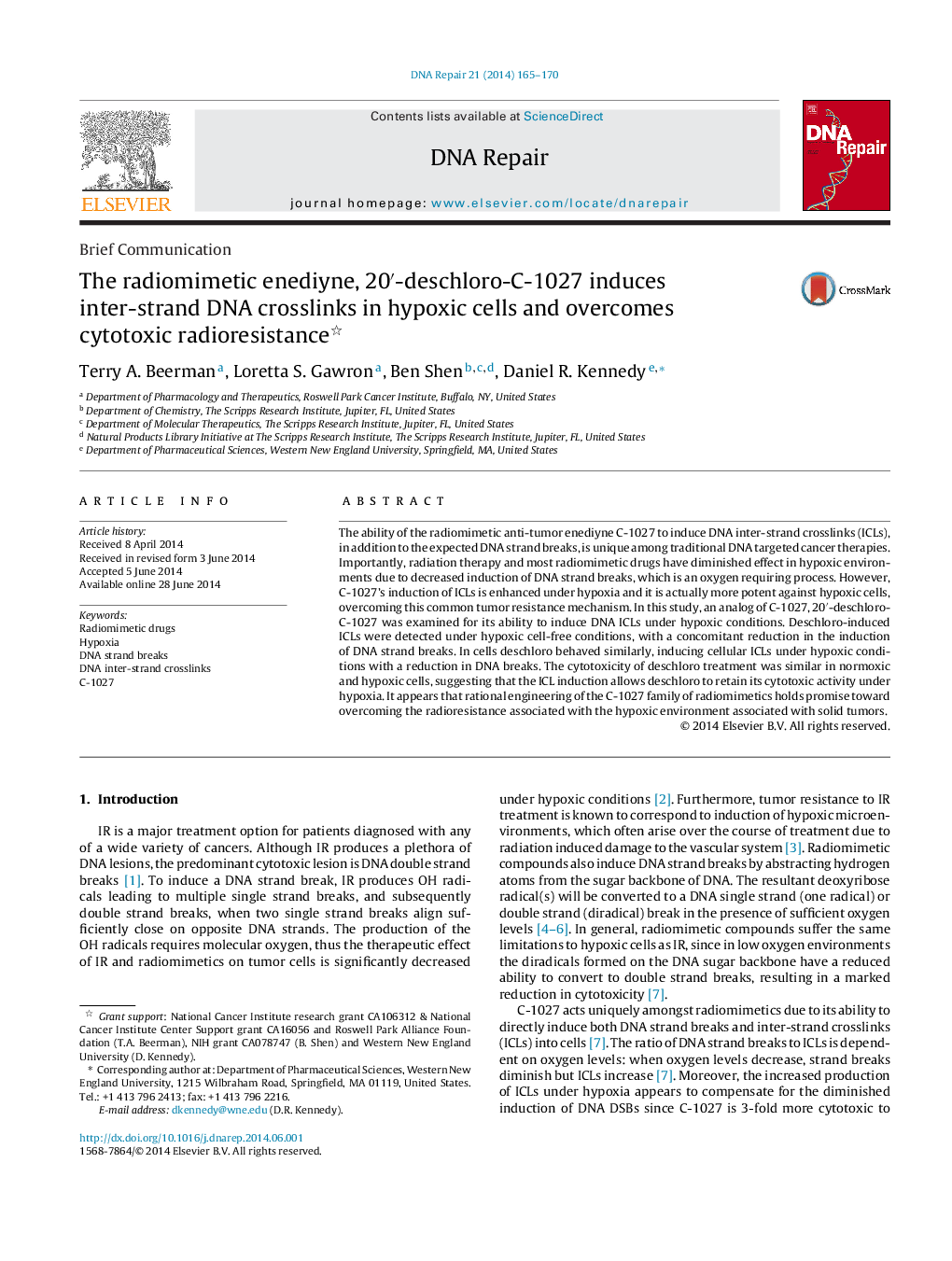| Article ID | Journal | Published Year | Pages | File Type |
|---|---|---|---|---|
| 1980157 | DNA Repair | 2014 | 6 Pages |
Abstract
The ability of the radiomimetic anti-tumor enediyne C-1027 to induce DNA inter-strand crosslinks (ICLs), in addition to the expected DNA strand breaks, is unique among traditional DNA targeted cancer therapies. Importantly, radiation therapy and most radiomimetic drugs have diminished effect in hypoxic environments due to decreased induction of DNA strand breaks, which is an oxygen requiring process. However, C-1027's induction of ICLs is enhanced under hypoxia and it is actually more potent against hypoxic cells, overcoming this common tumor resistance mechanism. In this study, an analog of C-1027, 20â²-deschloro-C-1027 was examined for its ability to induce DNA ICLs under hypoxic conditions. Deschloro-induced ICLs were detected under hypoxic cell-free conditions, with a concomitant reduction in the induction of DNA strand breaks. In cells deschloro behaved similarly, inducing cellular ICLs under hypoxic conditions with a reduction in DNA breaks. The cytotoxicity of deschloro treatment was similar in normoxic and hypoxic cells, suggesting that the ICL induction allows deschloro to retain its cytotoxic activity under hypoxia. It appears that rational engineering of the C-1027 family of radiomimetics holds promise toward overcoming the radioresistance associated with the hypoxic environment associated with solid tumors.
Keywords
Related Topics
Life Sciences
Biochemistry, Genetics and Molecular Biology
Biochemistry
Authors
Terry A. Beerman, Loretta S. Gawron, Ben Shen, Daniel R. Kennedy,
